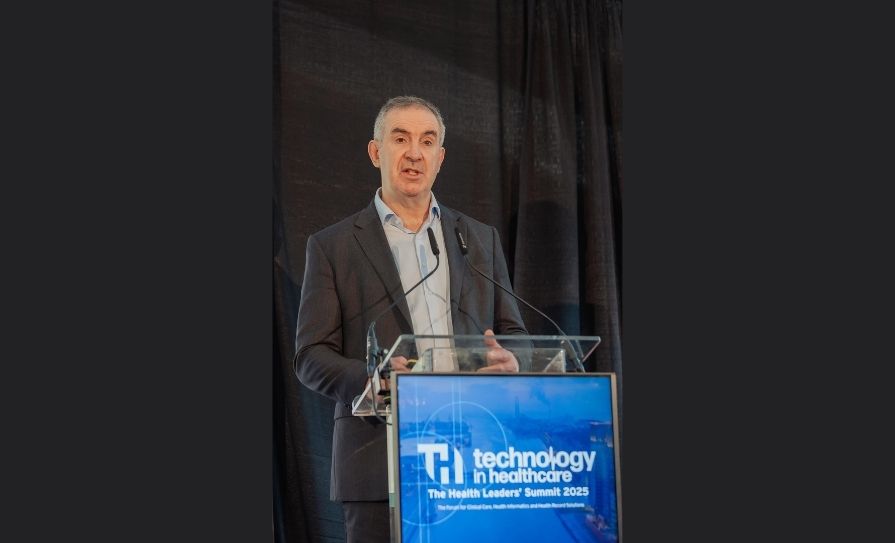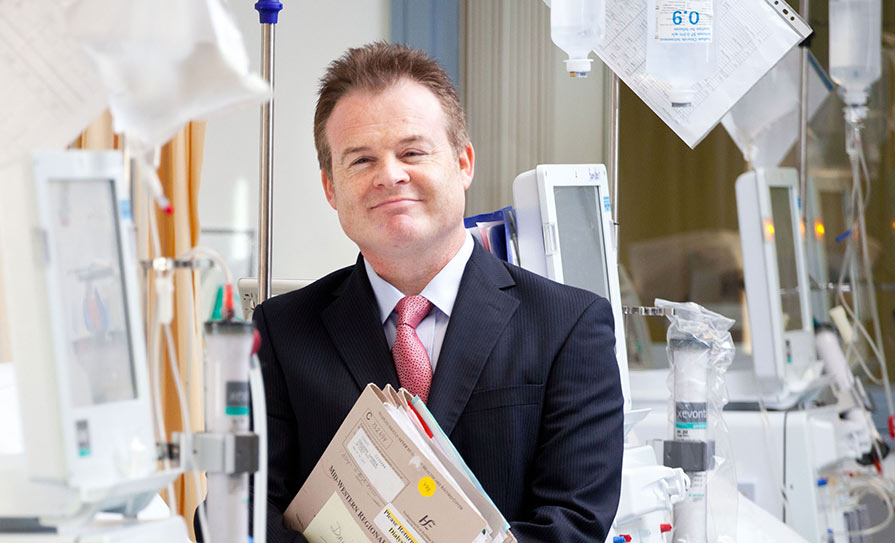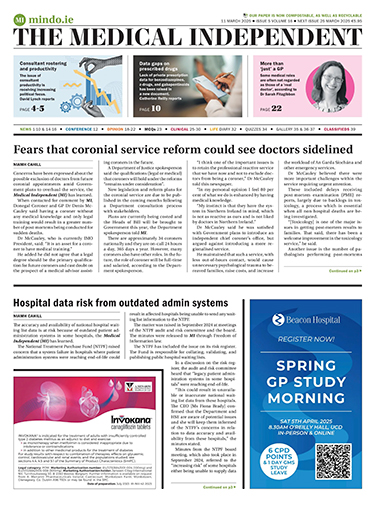Incoming President of the IMO Dr John Cannon argues for greater ambition in what we demand for our health service

I recently spent some time in renowned Copenhagen Institute for Future Studies. Along with doctors from other European countries, we spent a weekend conducting a thought experiment. We imagined our respective health services 20, 30, 40, years in the future. And not just any health service; our ‘ideal’ health service, the best case scenario.
‘Backcasting’
Once we had our health utopias fixed in our minds, we did some ‘backcasting’. Backcasting is a powerful tool from a strategy point of view and is particularly useful in projects with multiple milestones that span decades. Forecasting tries to predict a possible future, which then allows us to base our decisions on the assumption that this future will likely come to pass and thus prove our decisions – and our forecast – to have been correct. However, backcasting assumes that a certain future will happen regardless and asks the question, how did we get here? What must we have achieved? What must have happened for us to arrive at this point?
In this way, obstacles that would arrest our progress when forecasting, and thus stop us from strategising beyond that specific obstacle, can be easily navigated. Imagine a wide river stood between us – doctors, patients, society as a whole – and our ideal health service. We know that we have to get across this metaphorical river to build the health service of 2073. You then start to consider how do we get across the river? Do we swim – no, the current is too strong. Do we build a boat – well then, we’d have to train people how to build and sail boats. Do we build a bridge – that’s impossible, the planning authorisation we would need, let alone the cost, and then there’s the maintenance… and so on. You see what I’m getting at. We’re stuck in a box of our own creation. The here and now. We will never think about the health service of 2073 because we’re so focused on this one obstacle.
When you backcast you focus on the endpoint, and what the future looks like. We know we got over the river at some point, because here we are now in the future, across the river, looking back. That was a key step, and we did. But how did we do it? Don’t care. It happened. We did it. We must have found a way. Therefore, any disagreements between the swimmers, the sailors, and bridge builders are null and void and we can focus on what really matters, the destination.
This is a common problem in our health service, particularly for our doctors. We know where we need to get to, we know what the best model of care looks like. But navigating the red tape, produced by a labyrinthine health system, is paralysing and promotes inaction and despair. A problem so complex and vast it is over- whelming to most, particularly when your day-to-day job involves battling fire after fire.
Digitisation
Being a perennial daydreamer and schemer, imagining our health service in the near future – let’s say 2043 – wasn’t that tough for me. I imagined a fully digitised health service, with integration across primary care, secondary care, and community and public health medicine. Where hospital doctors checked scans and bloods at the end of patients’ beds, digitally prescribed, requested consults, and updated care notes using tab- lets and smartphones, all done with the seamless ease that modern technology affords us. This would free up more time for bed-side chats, counselling, and good honest doctor-patient interactions.
GPs had access to hospital notes, and discharge letters with the digital prescribing history – and importantly the medication changes – were sent electronically at the time of discharge. Patients had a single electronic health record, where all their health service history, bloods, scans, and management plans were shared ubiquitously, across all hospitals in the State and with primary care physicians. Waiting lists for routine and urgent appointments were measured in days and weeks, not months and years, and our rapid access and urgent referral pathways operated within the gold standard two-week wait.
As I described my utopian health service to my European colleagues, many of them stared blank-faced, as they told me their countries had long since adopted many
of my utopian dreams
The health data from both primary and secondary care was mined and qualitatively analysed to track service utilisation, identify stress points in the system, and proactively plan for future service needs. Data informed health policy, not political will, election cycles, and party politics. We looked beyond the standard assumption of an aging population with multiple comorbidities and used our country-specific data to promote health and focused on preventing acquirable diseases.
All physicians in both primary and secondary care could see what outpatient (OPD) appointments patients had coming up, and patients could easily cancel or rebook OPD visits using their smartphone. Patients could access their blood results, scans, and appropriate medical information – carte blanche access would not be prudent and may do more harm than good – us- ing a secure digital portal with oversight and interpretation from physicians.
Doctors had fulfilling careers, focused on patients, not plugging holes in the system, or bailing out water on a sinking ship. The use of established digital technologies allowed doctors to be doctors. To care. To treat. To cure. Doctors looked forward to work and finally had the work-life balance needed to promote long and successful careers.
Ambition
To my surprise, as I described my utopian health service to my European colleagues, many of them stared blank-faced, as they told me their countries had long since adopted many of my utopian dreams. I could see it in their eyes: “We thought Ireland was a first world health system?” I mean, I knew this already. Digital prescribing, continuation notes, seamless streamlined working environments, these were all reasons doctors had fled to Australia, New Zealand, and Canada and weren’t coming back.
But what surprised me the most was how unambitious my wildest dreams had been. I was in a box of my own creating, or rather a box of institutionalised thinking. I realised my world had contracted to nev- er-ending trolley counts and capacity crises. To emergency department numbers, waiting lists and delayed discharges. Crumbling infrastructure and deepening workforce shortages, and no clear vision as to how and when we were going to fix it.
Doctors are sick and tired of bearing the brunt of under-investment in our health service. Capacity and workforce deficits cannot be corrected by spin or by getting ‘senior decision makers’ on site on a Saturday. The HSE and the Department of Health need to stop worrying about whether they’re going to get across the river by swimming or using a boat. They need to think big, build a dam, and divert the river. That is how we build the health service of tomorrow. A generational level of investment is needed to turn this sinking ship around, and that does not simply mean throwing good money after old.
Ireland is renowned for punching above its weight in arts and sports. Even our economic performance and our stature in geo-politics belies the humble size of our nation. So why then does this proud island settle for so little when it comes to our health service? It’s time for that to change.













Leave a Reply
You must be logged in to post a comment.